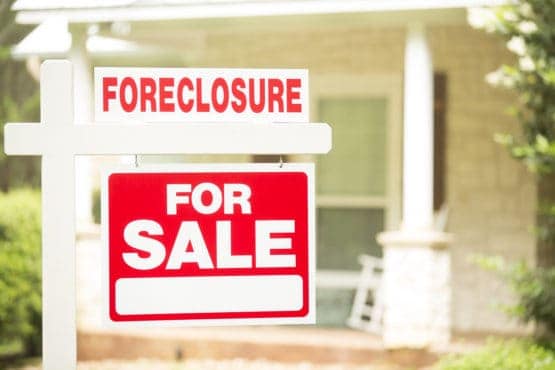As the pandemic-ravaged U.S. economy braces for a likely wave of housing foreclosures, a new study shows that losing a home can have painful ramifications that extend far beyond the immediate financial damage.
In a new working paper, Stanford economist Rebecca Diamond finds that foreclosures make homeowners less likely to buy another house in subsequent years. Their living arrangements become less secure, and they default on other debts more often.
Diamond and her co-authors – Rose Tan, a Stanford PhD student, and Adam Guren of Boston University – also identify a subset of homeowners who suffer the most: Mortgage holders who are on the margin.
These are the homeowners who are behind on their payments but could likely make good on their loans if given a breakthrough debt restructuring or government support. These marginal homeowners, who exist at all income levels, are far more likely to divorce and relocate to lower-quality neighborhoods as a result of foreclosure.
Diamond’s findings, released as a working paper on June 22 by the National Bureau of Economic Research, shed new light on what economists know about foreclosure’s impacts. They also come amid a brewing housing crisis due to the economic repercussions of COVID-19, with many housing experts predicting a rise in residential foreclosures that could pressure lawmakers to intervene.
“These results are highly relevant in today’s climate,” Diamond said. “There are huge, long-term harms of foreclosure that have not been on policymakers’ radars or, until now, understood from an academic perspective.” Diamond is a senior fellow at the Stanford Institute for Economic Policy Research (SIEPR) and an associate professor at the Stanford Graduate School of Business.
In her study, Diamond also looked at how foreclosure affects landlords and their tenants. She found that landlords take a monetary hit that is similar to homeowners but avoid the added pain of having to leave their primary residence. For renters, the disruptions are limited. While they are often evicted, that inconvenience tends to be short-lived and they avoid any long-term consequences.
“What’s particularly interesting is that landlords just get the financial shock and renters just get the eviction shock, but homeowners get both shocks and the effects are far more severe,” Diamond said. “It’s the combination of the financial hit and eviction that can devastate homeowners.”
Building on prior research
Media reports often detail the social ramifications of home foreclosures, but in the past, economists and regulators have looked only at the bottom-line costs, according to Diamond.
A 2010 report by the U.S. Department of Housing and Urban Development found that foreclosures during the Great Recession averaged $51,000. About $41,000 of that accounted for bank losses and drops in neighboring home values. Meanwhile, the homeowners going into foreclosure shouldered the other $10,000 worth of the cost.
Previous studies on housing foreclosures have tracked foreclosures by comparing owners whose lenders moved to seize their homes with those who stayed current on their mortgage payments. Credit reports, however, allow only for foreclosure analyses and do not reveal much about longer-term impacts, according to Diamond.
To overcome these drawbacks, Diamond, Tan and Guren built a large dataset around foreclosure filings recorded in Chicago’s Cook County between 2005 and 2016. Illinois requires foreclosures to go through its courts.
Next, Diamond’s team linked other key data sources to the filings, including records on bankruptcy, crime, divorce, individual address histories, credit scores, incomes by zip code, and school test scores.
The researchers then used two methods for analyzing the data. One approach allowed them to measure the average financial and non-financial effects of foreclosure on all homeowners over time. The other enabled them to look at the subset of homeowners, or about 7 percent of all foreclosure cases studied, who were on the cusp of foreclosure versus a debt restructuring. In other words, they didn’t face a severe hardship that would make it impossible for them to make good on their mortgages.
This second approach was especially significant. Because Cook County randomly assigns foreclosure cases to judges, the outcomes for marginal cases vary depending on the judge. This meant Diamond could match and then track homeowners with similar characteristics, but different outcomes based on how lenient or strict their designated judge was.
“That’s as close as we can get to an experiment that is naturally occurring in the data,” she said.
The need for new policy considerations
Marginal homeowners who went through foreclosure, she found, had the most to lose. They typically lived in higher-income neighborhoods and had larger mortgages. They were also twice as likely to be divorced after five years compared with owners whose homes were ultimately not foreclosed on. They tended to relocate to significantly poorer-quality neighborhoods, based on zip code incomes and school test scores.
Diamond found that the differences in neighborhood quality between foreclosed owners and their non-foreclosed peers widened over time. “For marginal homeowners, the negative effects compared to average homeowners were huge,” she said.
Average homeowners and landlords did not escape unscathed. Both experienced significant financial distress in terms of lost assets and delinquent payments on other forms of debt. Foreclosed-upon homeowners of all kinds were not forced to downsize, but they were significantly less likely to own their future home. Landlords, meanwhile, typically stayed in their primary residence but had higher rates of DUI convictions post-foreclosure.
Diamond said her findings suggest the need for a different cost-benefit analysis by policymakers when considering programs for helping underwater homeowners. This includes designing programs with marginal homeowners – and the additional risks they face – in mind.
“As with any government policy, only a share of people who are eligible for a benefit ever try to take it up,” Diamond said. “My guess is that the people who would take up an offer of help would be the most to gain.”
Media Contacts
Adam Gorlick, Stanford Institute for Economic Policy Research: (650) 724-0614; [email protected]


